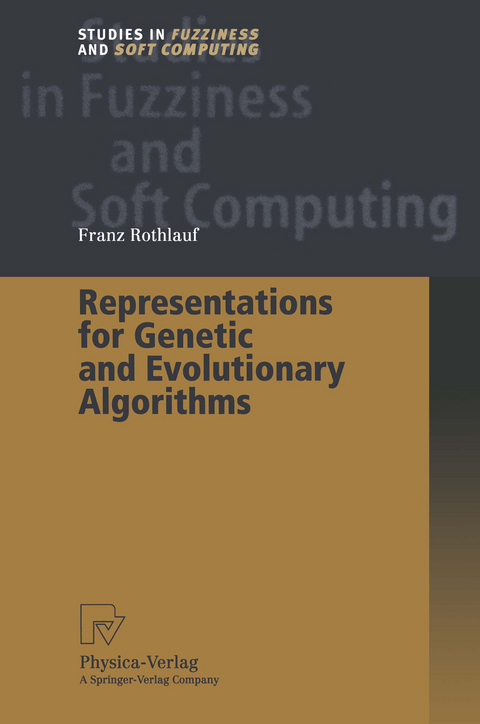
Representations for Genetic and Evolutionary Algorithms
Physica (Verlag)
978-3-642-88096-4 (ISBN)
In the field of genetic and evolutionary algorithms (GEAs), much theory and empirical study has been heaped upon operators and test problems, but problem representation has often been taken as given. This monograph breaks with this tradition and studies a number of critical elements of a theory of representations for GEAs and applies them to the empirical study of various important idealized test functions and problems of commercial import. The book considers basic concepts of representations, such as redundancy, scaling and locality and describes how GEAs'performance is influenced. Using the developed theory representations can be analyzed and designed in a theory-guided manner. The theoretical concepts are used as examples for efficiently solving integer optimization problems and network design problems. The results show that proper representations are crucial for GEAs'success.
1. Introduction.- 1.1 Purpose.- 1.2 Organization.- 2. Representations for Genetic and Evolutionary Algorithms.- 2.1 Genetic Representations.- 2.2 Genetic and Evolutionary Algorithms.- 2.3 Problem Difficulty.- 2.4 Existing Recommendations for the Design of Efficient Representations for Genetic and Evolutionary Algorithms.- 3. Three Elements of a Theory of Genetic and Evolutionary Representations.- 3.1 Redundancy.- 3.2 Building Block-Scaling.- 3.3 Distance Distortion.- 3.4 Summary and Conclusions.- 4. Time-Quality Framework for a Theory-Based Analysis and Design of Representations.- 4.1 Solution Quality and Time to Convergence.- 4.2 Elements of the Framework.- 4.3 The Framework.- 4.4 Implications for the Design of Representations.- 4.5 Summary and Conclusions.- 5. Analysis of Binary Representations of Integers.- 5.1 Two Integer Optimization Problems.- 5.2 Binary String Representations.- 5.3 A Theoretical Comparison.- 5.4 Empirical Results.- 5.5 Conclusions.- 6. Analysis of Tree Representations.- 6.1 The Tree Design Problem.- 6.2 Prüfer Numbers.- 6.3 The Link and Node Biased Encoding.- 6.4 The Characteristic Vector Encoding.- 6.5 Conclusions.- 7. Design of Tree Representations.- 7.1 Network Random Keys (NetKeys).- 7.2 A Direct Tree Representation (NetDir).- 8. Performance of Genetic and Evolutionary Algorithms on Tree Problems.- 8.1 GEA Performance on Scalable Test Tree Problems.- 8.2 GEA Performance on the Optimal Communication Spanning Tree Problem.- 8.3 Summary.- 9. Summary, Conclusions and Future Work.- 9.1 Summary.- 9.2 Conclusions.- 9.3 Future Work.- A. Optimal Communication Spanning Tree Test Instances.- A.1 Palmer's Test Instances.- A.2 Raidl's Test Instances.- A.3 Berry's Test Instances.- A.4 Real World Problems.- References.- List of Symbols.- List ofAcronyms.
| Erscheint lt. Verlag | 18.4.2012 |
|---|---|
| Reihe/Serie | Studies in Fuzziness and Soft Computing |
| Vorwort | D.E. Goldberg |
| Zusatzinfo | XIV, 290 p. |
| Verlagsort | Heidelberg |
| Sprache | englisch |
| Maße | 155 x 235 mm |
| Gewicht | 469 g |
| Themenwelt | Informatik ► Theorie / Studium ► Künstliche Intelligenz / Robotik |
| Mathematik / Informatik ► Mathematik ► Algebra | |
| Wirtschaft ► Betriebswirtschaft / Management | |
| Schlagworte | algorithm • algorithms • Calculus • Communication • Evolution • evolutionary algorithm • GEA • Genetic and Evolutionary Algorithms • Integer Representations • Operator • optimal communication spanning tree problem • Optimization • Theorey of representation • tree repr |
| ISBN-10 | 3-642-88096-7 / 3642880967 |
| ISBN-13 | 978-3-642-88096-4 / 9783642880964 |
| Zustand | Neuware |
| Informationen gemäß Produktsicherheitsverordnung (GPSR) | |
| Haben Sie eine Frage zum Produkt? |
aus dem Bereich


